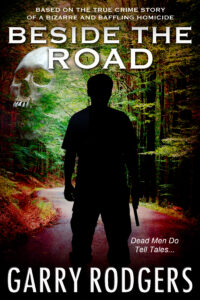Yesterday was the twenty-fifth anniversary of Diana, Princess of Wales, untimely death in a Paris car crash. Over those years, and despite a massive investigation along with an extensive inquiry, many people believe Diana’s death was no accident—it was a homicide. Kill Zoners who follow my blog at DyingWords.net know I’ve written a lot of posts on high-profile deaths like JonBenet Ramsey, Marilyn Monroe, Elvis Presley, Natalie Wood, the Black Dahlia, JFK, and on and on. In 2017, I wrote an analogy of Diana’s death circumstances and came to a logical conclusion. I thought I’d repost it this morning on The Kill Zone.
— — —
It’s been 20 25 years since Diana, the Princess of Wales, was killed in a horrific vehicle collision. This tragic event ended of one of the world’s most famous people’s life. It shocked everyone. Millions lined London streets paying respect to her funeral procession. Over 2 billion watched her funeral on TV. But Princess Diana’s death was far more than a loss to the world. It left her two young boys without a mother.
 Circumstances surrounding Diana’s death are exhaustively investigated. Everyone knows basic facts that Diana and her new boyfriend, Dodi al-Fayed, were leaving a Paris hotel for a private apartment and trying to avoid the ever-present Paparazzi. They got in the back seat of a Mercedes sedan driven by Henri Paul—a hotel security agent. Diana’s bodyguard, Trevor Rees-Jones, rode shotgun in the passenger front.
Circumstances surrounding Diana’s death are exhaustively investigated. Everyone knows basic facts that Diana and her new boyfriend, Dodi al-Fayed, were leaving a Paris hotel for a private apartment and trying to avoid the ever-present Paparazzi. They got in the back seat of a Mercedes sedan driven by Henri Paul—a hotel security agent. Diana’s bodyguard, Trevor Rees-Jones, rode shotgun in the passenger front.
But exactly what happened next is still cloudy. To escape prying eyes and cameras out front of the Ritz Hotel, the four used a rear escape route—sneaking away to the apartment. Several Paparazzi members clued in. They raced to follow. As the Mercedes entered the Pont de l’Alma road tunnel along the Seine River in central Paris, Henri Paul somehow lost control and smashed head-on into a solid concrete column.
The car was destroyed. Henri Paul and Dodi al-Fayed were dead at the scene. Princess Diana passed away from massive internal injuries two hours later. Only Rees-Jones survived. However, he had no recollection of what happened.
Those are the bare case facts. There were two extensive investigations. One by the French police and one by the British authorities who held a public inquest. Both inquiries concluded Diana’s death was from her fatal injuries—the result of a drunk-driving, motor vehicle incident with excessive speed a contributing factor. So was Diana’s neglect to wear her seat belt.
And both inquiries viewed the pursuing Paparazzi as a non-direct, contributing factor despite five photographers charged with manslaughter and three others prosecuted for obstructing justice and violating human rights. No one was convicted. But that didn’t end speculation that Princess Diana was murdered. In fact, Lord Stevens who oversaw the British inquest stated, “This case is substantially more complicated than once thought.”
Rumors ran rampant. There were stories of Paparazzi intentionally overtaking the Mercedes and cutting it off into the column. There’s an unresolved issue of a notorious white Fiat that’s never been found. The Royal Family were accused of masterminding Diana’s murder because she’d been impregnated by a Muslim foreigner. Even the British SAS and MI6 were implicated. And most accusatory was Dodi’s father, Egyptian billionaire Mohammed al-Fayed.
But where was proof the Peoples’ Princess was really a homicide victim? Well, two decades later it turns out that the homicide declaration was right all along. And the evidence—the undisputed truth that Princess Diana really was a homicide victim—is absolutely clear.
Facts Surrounding Diana’s Car Crash
Although Princess Diana and Dodi al-Fayed were officially an item, they’d only been seeing each other just over a month. That’s hardly enough time to get engaged let alone planning a pregnancy. Diana was far too smart than getting accidentally knocked-up never mind rashly getting married. Both of those stories are blatantly false.
They rendezvoused on Mohammed al-Fayed’s yacht before arriving by private jet into Paris on August 31, 1997. Then dined at a popular restaurant before dropping by the Ritz Hotel where the Paparazzi laid in wait. Diana and Dodi had a nightcap. Rees-Jones was nearby. Henri Paul made a plan to bring the staff Mercedes around to the rear door where the celebrity couple could quietly slip out. Then, Paul would chauffeur the group to a private apartment that Mohammed al-Fayed kept in the heart of Paris.
The plan almost worked. Unfortunately, the Paparazzi were crafty. They set several sentries out back. Diana and her entourage were spotted as they sped away. The time was approximately 12:20 am Paris time. Three minutes later, at 12:23, the Mercedes entered the Alma tunnel. Henri lost control and the Mercedes swerved to the left or driver’s side. It hit a concrete column support with such force the engine was shattered and the radiator shoved through to the front seat.
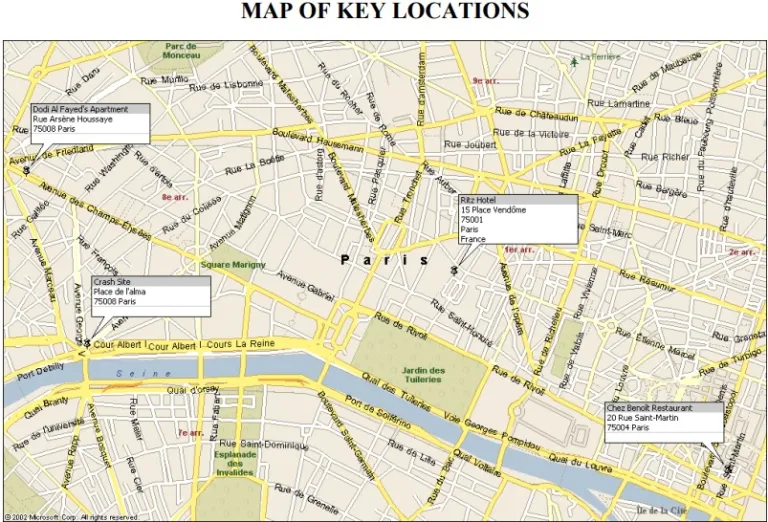
The Mercedes rotated 90 degrees counterclockwise and rocketed backward into the right tunnel wall. It came to rest but was so severely damaged that emergency responders had to cut off the roof in order to extract the crash victims. It was 20 minutes before Diana was freed.
By this time, the Paparazzi were present in full force. Some were arrested. Some had their cameras confiscated after taking gruesome victim death photos. The scene was nearly impossible to control, especially as word spread about who the famous victims were.
Emergency personnel reported that Princess Diana was semi-conscious when they arrived. She softly cried “Oh my God”—repeatedly—and said, “Leave me alone.” By the time Diana was pulled from the wreckage, she’d gone unconscious. Then she suffered acute cardiac arrest when laid on a stretcher. Her heart was restarted by manual resuscitation however her blood pressure severely dropped on route to the hospital.
Diana arrived at the emergency department approximately 2:06 am. That was an hour and a half after impact. She was still breathing and displayed a weak pulse. X-rays immediately determined she had massive internal bleeding. A thoracic surgeon incised her interior to drain the blood then found her heart’s left ventricle was lacerated. While suturing this main blood vessel, Diana went into full cardiac arrest. Extensive resuscitation efforts by the trauma team failed to revive her.
Diana—the Peoples’ Princess—was declared dead at 4:00 am.
The bodies of Henri Paul and Dodi al-Fayed were taken to the city morgue. It was a separate building adjacent to Diana’s emergency ward. Because of the massive crowd now assembling outside the hospital, the Paris coroner felt disrespectful removing Diana’s body past the crowd. He conducted an external examination in a private hospital room but didn’t order a full autopsy. The medical cause of Diana’s death was abundantly clear.
This left the problem of keeping Diana’s now-decomposing body in a warm room. The ER had no cooler. Pursuant to French law, the coroner legally authorized Diana’s embalming to retard decomposition while transportation arrangements were made to take her body to England. This was the right thing to do but led to fuel conspiracy theories, some which abound today.
Full autopsies were conducted on Dodi al-Fayed and Henri Paul. Both clearly died of internal injuries—both suffering severed aortic arteries which are immediately fatal. They had both been on the driver’s side which absorbed more of the impact. This explains why Diana was not killed instantly and why Rees-Jones walked away. His front airbag deployed but there was none in the back to protect the Princess.
Toxicology Testing on Henri Paul Found Interesting Results.
These are Henri Paul’s official and reliable toxicology results. They were later confirmed to be his through DNA testing to dispell accusations of evidence tampering.
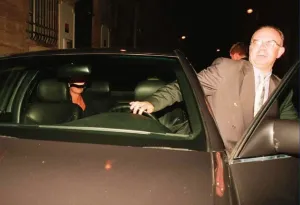 Blood Alcohol Count (BAC) — 174 milligrams per 100 milliliters of blood or commonly termed a BAC of 0.174% (This was corroborated by his vitreous humor or eye fluid count being 0.173%, his urine being 0.218% and his stomach BAC being 0.191%.)
Blood Alcohol Count (BAC) — 174 milligrams per 100 milliliters of blood or commonly termed a BAC of 0.174% (This was corroborated by his vitreous humor or eye fluid count being 0.173%, his urine being 0.218% and his stomach BAC being 0.191%.)
The legal BAC limit for impaired driving in France is 0.05% making Henri Paul 3 times over the drunk driving tolerance limit.
Small traces of the anti-anxiety medication fluoxetine were noted but were well within the therapeutic range. So was the medication tiapride. Carboxyhemoglobin and nicotine levels proved Paul was a heavy smoker.
Examination of the Wrecked Mercedes
Although the Mercedes was a total write-off, it was sufficiently sound to inspect. There were no mechanical defects found mechanically contributing to the crash. One tire was punctured but wasn’t a blowout. It happened because of impact. The brakes and steering were sound and the car was only two years old with low mileage.
Thorough testing was done on the seatbelts. All were in perfect operation. It was obvious none of the occupants were wearing their restraints, however, it’s questionable if Paul or al-Fayed would have been saved given the massive force of the left side impact. Overall, there was nothing mechanically wrong with this vehicle that made it veer hard so hard to the left.
So what caused the Mercedes to spin out of control? Did the Paparazzi cut it off? Did the mysterious white Fiat force it into the column? Why did a perfectly good car fail and, by the way, just how fast was the Mercedes traveling?
Totally fraudulent information circulated for years about the Mercedes traveling at 120 mph (190 kph) when it hit the column. Proof of this—they said—was the car’s speedometer sticking at that measurement. That’s rubbish. Total bullshit, like so many myths surrounding Princess Diana’s death. Truth is the Mercedes was doing 65 mph (120 kph), +/- 5 mph, when it hit the column. This was established by a meticulous accident reconstruction conducted by the French police.
Still, this is a significant velocity given the Mercedes’ gross vehicle weight with 4 passengers being over 4,000 lbs (1815 kg). The kinetic energy transfer of this weight multiplied by high speed resulted in Diana’s heart being—literally—smashed inside her chest. It’s surprising Diana lived as long as she did.
The real reason Henri Paul lost control is hidden in the details of the accident reconstruction report. It’s written in technical jargon but clearly understandable. There were no skid marks indicating pre-braking. No out-of-control swerve. One moment the car was going fast and straight. The next it cut sideways.
The Answer is in Tunnel Design and Vehicle Dynamics.
The Alma tunnel has a posted speed of 20 mph (30 kph). That’s for a good reason. The tunnel is low and narrow. It also sharply dips at the entry and is protected by a perpendicular drainage grate to keep the flat area from flooding with water.
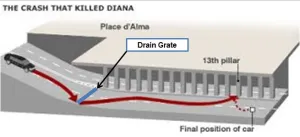
The collision reconstruction analyst deduced when Paul declined the entry ramp and struck the bumpy metal grate at 65 mph, the Mercedes reacted by going slightly airborne. This reduced the road surface friction adhered by the tires, effectively causing a dry hydroplane incident. The analyst surmised that Paul, in his impaired state, never braked but misjudged an overcorrection and simply steered the fast-moving Mercedes into the column.
The Operation Paget Report
Many people who followed Princess Diana’s death story don’t know about Operation Paget and its incredibly detailed 871-page report. Operation Paget was a London Metropolitan Police special task force detailed to investigate conspiracy and murder allegations involving the Princess’ tragic end. They also addressed cover-ups. You can download it here.
The British inquest overseen by Lord Stevens relied heavily on the brilliant work uncovered in Project Paget. The police went to amazing lengths dealing with every listed allegation. They fairly answered with truth. They dispelled insinuations of government plots and sinister cover ups.
They established a fact—there were no credible eyewitnesses to the crash and pursuing Paparazzi were nowhere in sight when the impact occurred. They even dealt with the white Fiat nonsense by pointing out white paint on the Mercedes door was probably from a previous parking lot incident.
As much as everyone wants to blame the Paparazzi for killing Princess Diana—well, that’s just plain wrong. Certainly, Paparazzi presence was a contributing factor as Paul was no doubt driving this speed to evade them. One can’t blame the Spencer family and Diana’s two sons, Princes William and Harry, holding the Paparazzi responsible for essentially murdering their beloved Diana. That’s a natural emotional response. But the Paparazzi, as individuals or as a group, are innocent.
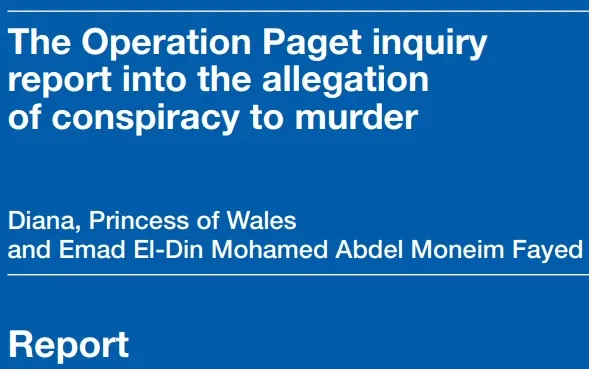
The truth is Diana, the Princess of Wales, was no accident victim. Her death was clearly a homicide. Let me explain.
On April 7, 2008 Lord Stevens’ inquest returned a verdict. They ruled Princess Diana was the “victim of an unlawful killing by the grossly negligent chauffeur, Henri Paul, who’s driving ability and judgment were severely impaired by alcohol”. The secondary contributor to Diana’s death was her failure to buckle up. Not the Paparazzi.
The jury made no mention of Diana’s death being an accident. That’s because they couldn’t rule it an accident. Death classifications are universal throughout the civilized world. Coroners and their juries have only five classifications to choose from: Natural, Accidental, Suicide, Homicide and Undetermined.
You can immediately rule out Princess Diana’s death as natural, suicide, and undetermined. The cause and means of Diana’s death are clear. She died because of internal bleeding and hypovolemic shock resulting from injuries received in her car crash. That’s clear. What’s not clear to most people is why this can’t be classified as an accidental death. It’s because of the legal definition of homicide.
Homicide means a person dies because of direct actions by another person. A homicide classification doesn’t necessarily mean a culpable or intentional killing of one person by another. It includes lesser degrees of acts like manslaughter and criminal negligence that cause death. Homicide also includes deaths that result from any form of a criminal act including impaired driving. Henri Paul was criminally drunk and grossly negligent. He directly caused Princess Diana’s death.
That makes the Peoples’ Princess a homicide victim.





